| |||||||||||||||||||||||||||||||||
ARTIST MONOGRAPHS
|
|
STATUS: Out of stock Temporarily out of stock pending additional inventory. |
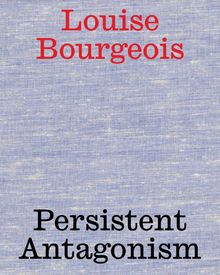 Louise Bourgeois: Persistent Antagonism
Louise Bourgeois: Persistent Antagonism
Published by Walther König, Köln.
Edited with text by Stella Rollig, Sabine Fellner, Johanna Hofer. Text by Louise Bourgeois, Bice Curiger, Ulf Küster, John Yau.
Accompanying a major solo exhibition of work by French artist Louise Bourgeois (1911–2010), this monograph pays particular attention to her oil paintings made between 1938 and 1949 that first developed the formal vocabulary and thematic concerns she explored over the following six decades.
PUBLISHER
Walther König, Köln
BOOK FORMAT
Clth, 9 x 11 in. / 216 pgs / 170 color.
PUBLISHING STATUS
Pub Date 6/18/2024
Out of stock indefinitely
DISTRIBUTION
D.A.P. Exclusive
Catalog: SPRING 2024 p. 134
PRODUCT DETAILS
ISBN 9783753305202 FLAT40
List Price: $45.00 CAD $56.95
AVAILABILITY
Not available
STATUS: Out of stock indefinitely. |
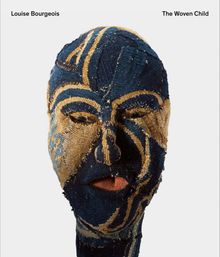 Louise Bourgeois: The Woven Child
Louise Bourgeois: The Woven Child
Published by Hatje Cantz.
Edited with text by Ralph Rugoff. Text by Lynne Cooke, Rachel Cusk, Julienne Lorz.
This book provides a comprehensive overview of the fabric works from the last two decades in the career of legendary artist Louise Bourgeois (1911–2010). “I’ve always had a fascination with the needle,” she once said, “the magic power of the needle. The needle is used to repair damage. It’s a claim to forgiveness.”
This body of work began when the artist started incorporating clothes from all stages of her life into her art, and later expanded to include a range of other textiles such as bed linen, handkerchiefs, tapestry, and needlepoint. The fabric works mine the themes of identity and sexuality, trauma and memory, guilt and reparation, and serve as metaphors for emotional and psychological states.
The catalog—which accompanies the exhibition at the Hayward Gallery, London, and the Gropius Bau, Berlin—features works from numerous series, including the monumental Cell installations, figurative sculptures and abstract drawings.
PUBLISHER
Hatje Cantz
BOOK FORMAT
Paperback, 9.5 x 11 in. / 208 pgs / 179 color.
PUBLISHING STATUS
Pub Date 4/12/2022
Active
DISTRIBUTION
D.A.P. Exclusive
Catalog: SPRING 2022 p. 11
PRODUCT DETAILS
ISBN 9783775751490 TRADE
List Price: $55.00 CAD $75.00
AVAILABILITY
In stock
in stock $55.00 Free Shipping UPS GROUND IN THE CONTINENTAL U.S. |
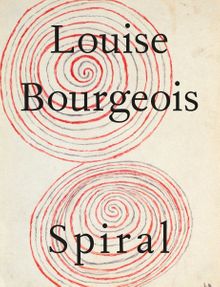 Louise Bourgeois: Spiral
Louise Bourgeois: Spiral
Published by Damiani.
Text by Louise Bourgeois.
In materials as diverse as wood, steel, bronze, latex, marble, plaster, resin, hemp, lead, ink, pencil, crayon, woodcut, watercolor and gouache, Louise Bourgeois (1911–2010) investigates every imaginable manifestation of the spiral, from graphic patterns to graphite whorls, wobbly orbits to chiseled vortices, twisted columns to coiling snakes, staircases and pyramids. The cursive blue-paper word drawings also included, in English and French, complement the purely visual works by conveying the spirit of Bourgeois’ writing in extraordinary pictorial forms. Bourgeois called the spiral “an attempt at controlling the chaos. It has two directions. Where do you place yourself, at the periphery or at the vortex?” In another context, she has also stated “I would dream of my father’s mistress. I would do it in my dreams by wringing her neck. The spiral—I love the spiral—represents control and freedom.”
PUBLISHER
Damiani
BOOK FORMAT
Clth, 8.75 x 11.75 in. / 84 pgs / illustrated throughout.
PUBLISHING STATUS
Pub Date 2/19/2019
Out of stock indefinitely
DISTRIBUTION
D.A.P. Exclusive
Catalog: SPRING 2019 p. 59
PRODUCT DETAILS
ISBN 9788862086448 TRADE
List Price: $50.00 CAD $69.95
AVAILABILITY
Not available
STATUS: Out of stock indefinitely. |
 Louise Bourgeois: To Unravel a Torment
Louise Bourgeois: To Unravel a Torment
Published by Glenstone Museum.
Edited by Emily Wei Rales, Ali Nemerov. Introduction by Emily Wei Rales. Text by Briony Fer, Philip Larratt-Smith.
Celebrated for her singular contributions to 20th-century sculpture, drawing, painting, printmaking, installation and writing, French-born American artist Louise Bourgeois' (1911–2010) explorations of the human condition originated from her own lived experience. "My goal is to relive a past emotion," Bourgeois explained. "My art is an exorcism." Psychologically, emotionally and often sexually charged, Bourgeois' works intermingle the abstract and corporeal, the voluptuous and the distressing, to striking effect.
Louise Bourgeois: To Unravel a Torment accompanies the first exhibition of the artist's work at Glenstone Museum, and features more than 30 major works drawn from the museum's collection. From her early wooden Personages to her large hanging sculptures, from suites of drawings and prints to textile works and her immersive Cells, To Unravel a Torment surveys Bourgeois' career through selected examples from her enormous body of work.
Bourgeois was also a prolific writer, matching her sculptural language with reams of psychoanalytic musings on repression, symbolism and material. To Unravel a Torment also brings together never-before-published diary entries by the artist, annotated by Bourgeois scholar Philip Larratt-Smith, a contribution by art historian Briony Fer and an introduction by Emily Wei Rales, founder and director of Glenstone Museum.
PUBLISHER
Glenstone Museum
BOOK FORMAT
Hardcover, 8.75 x 11 in. / 208 pgs / 95 color / 3 bw.
PUBLISHING STATUS
Pub Date 10/23/2018
Active
DISTRIBUTION
D.A.P. Exclusive
Catalog: FALL 2018 p. 41
PRODUCT DETAILS
ISBN 9780999802915 TRADE
List Price: $50.00 CAD $67.50 GBP £45.00
AVAILABILITY
Out of stock
STATUS: Out of stock Temporarily out of stock pending additional inventory. |
 Louise Bourgeois: An Unfolding Portrait
Louise Bourgeois: An Unfolding Portrait
Published by The Museum of Modern Art, New York.
By Deborah Wye.
Louise Bourgeois: An Unfolding Portrait explores the prints and books of the celebrated sculptor. This little-known body of work is vast in scope—numbering some 1,200 individual compositions—and highly significant within her larger practice. These works encompass the same themes and motifs that occupied Bourgeois throughout her career, and they are explored here within the context of related sculptures, drawings and early paintings. This investigation sheds light on Bourgeois’ creative process overall, most vividly through the evolving print states and variants that led to her final compositions; seeing these sequences unfold is akin to looking over the artist’s shoulder as she worked.
Published in conjunction with an exhibition at The Museum of Modern Art, this catalog presents more than 270 prints and books, organized thematically, and includes an essay that traces Bourgeois’ involvement with these mediums within the broader developments of her life and career. It also emphasizes the collaborative relationships that were so fundamental to these endeavors. Included are interviews with Bourgeois’ longtime assistant, a printer she worked with side-by-side at her home/studio on 20th Street in New York and the publisher who, in the last decade of her life, encouraged her to experiment with innovative prints that broke the traditional boundaries of the medium. The volume is rounded out with a chronology and bibliography that focus on prints and illustrated books while also providing general background on Bourgeois’ life and art.
Born in Paris in 1911, Louise Bourgeois was raised by parents who ran a tapestry restoration business. She met Robert Goldwater, an American art historian, in Paris and they married and moved to New York in 1938. Early on, Bourgeois focused on painting and printmaking, turning to sculpture only in the later 1940s. In 1982, at 70 years old, Bourgeois finally took center stage with a retrospective at The Museum of Modern Art. She died in New York in 2010, at the age of 98.
Deborah Wye is Chief Curator Emerita of Prints and Illustrated Books at The Museum of Modern Art, New York.
PUBLISHER
The Museum of Modern Art, New York
BOOK FORMAT
Hardcover, 9 x 10.5 in. / 248 pgs / 340 color.
PUBLISHING STATUS
Pub Date 9/29/2017
Out of stock indefinitely
DISTRIBUTION
D.A.P. Exclusive
Catalog: FALL 2017 p. 16
PRODUCT DETAILS
ISBN 9781633450417 TRADE
List Price: $55.00 CAD $72.50
AVAILABILITY
Not available
STATUS: Out of stock indefinitely. |
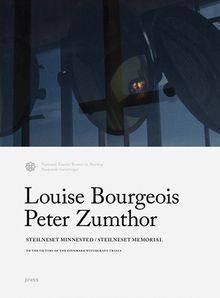 Louise Bourgeois and Peter Zumthor: Steilneset Memorial
Louise Bourgeois and Peter Zumthor: Steilneset Memorial
To the Victims of the Finnmark Witchcraft Trials
Published by Forlaget Press.
Foreword by Jan Andresen. Text by Svein Rønning, Mari Lending, Anne Karin Jortveit, Jeanette Sky.
The brainchild of the National Tourist Routes project in Norway (a government-sponsored initiative which aims to attract visitors to remote but exceptionally beautiful locations), the Steilneset Memorial started out as a modest monument to honor the victims of the witchcraft trials, to be built on the site where the burnings originally took place. But the project, which would be Bourgeois’ last major work, grew in the hands of Zumthor and Bourgeois into two distinct, haunting structures.
PUBLISHER
Forlaget Press
BOOK FORMAT
Hardcover, 6.5 x 9 in. / 160 pgs / 75 color.
PUBLISHING STATUS
Pub Date 12/27/2016
Out of print
DISTRIBUTION
D.A.P. Exclusive
Catalog: FALL 2016 p. 146
PRODUCT DETAILS
ISBN 9788232800957 TRADE
List Price: $45.00 CAD $60.00 GBP £40.00
AVAILABILITY
Not available
STATUS: Out of print | 00/00/00 For assistance locating a copy, please see our list of recommended out of print specialists |
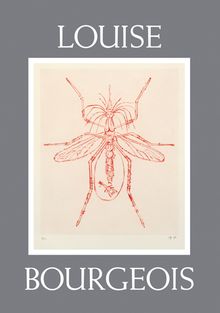 Louise Bourgeois: Autobiographical Prints
Louise Bourgeois: Autobiographical Prints
Published by Hayward Gallery Publishing.
Text by Juliet Mitchell.
PUBLISHER
Hayward Gallery Publishing
BOOK FORMAT
Paperback, 6.5 x 9.5 in. / 96 pgs / 25 bw.
PUBLISHING STATUS
Pub Date 5/24/2016
Out of stock indefinitely
DISTRIBUTION
D.A.P. Exclusive
Catalog: SPRING 2016 p. 139
PRODUCT DETAILS
ISBN 9781853323430 TRADE
List Price: $18.00 CAD $25.50
AVAILABILITY
Not available
STATUS: Out of stock indefinitely. |
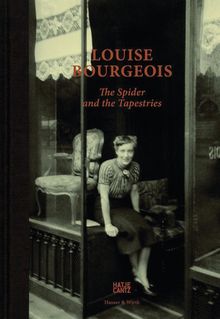 Louise Bourgeois: The Spider and the Tapestries
Louise Bourgeois: The Spider and the Tapestries
Published by Hatje Cantz.
Text by Louise Bourgeois.
Louise Bourgeois' tapestry and needlepoint work deals with reparation in both a literal and metaphorical sense. In many of the works, fragmented tapestries are pieced together and repaired to create new sculptural forms. The recurring practices of weaving, stitching and mending express Bourgeois' identification with her childhood and the family business of tapestry restoration. Coupled with the medium of tapestry, Bourgeois' recurring motif of the spider symbolizes her mother, a weaver, and fully explores the complex relationship between mother and child. This publication includes archival photographs and facsimile documents from the Bourgeois family archive, as well as excerpts from the artist's psychoanalytical writings.
PUBLISHER
Hatje Cantz
BOOK FORMAT
Clth, 5.75 x 8.25 in. / 92 pgs / 69 color.
PUBLISHING STATUS
Pub Date 7/10/2015
Out of stock indefinitely
DISTRIBUTION
D.A.P. Exclusive
Catalog: FALL 2015 p. 120
PRODUCT DETAILS
ISBN 9783775739979 TRADE
List Price: $40.00 CAD $54.00
AVAILABILITY
Not available
STATUS: Out of stock indefinitely. |
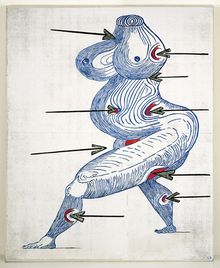 Louise Bourgeois: I Have Been to Hell and Back
Louise Bourgeois: I Have Been to Hell and Back
Published by Hatje Cantz.
Preface by Daniel Birnbaum, Ann-Sofi Noring. Text by Iris Müller-Westermann, Lea Vuong. Interview by Christiane Meyer-Toss.
Born in Paris, where she studied with Fernand Léger, Louise Bourgeois (1911–2010) moved to New York in 1938, where her first solo exhibition was held at the Bertha Schaefer Gallery in 1945. She quickly developed a sculptural vocabulary that drew inventively and equally on Abstract Expressionism, Surrealism and psychoanalysis. Bourgeois had her first retrospective in 1982, at The Museum of Modern Art in New York. She died in May 2010.
PUBLISHER
Hatje Cantz
BOOK FORMAT
Paperback, 8.5 x 11 in. / 285 pgs / 250 color.
PUBLISHING STATUS
Pub Date 6/23/2015
Out of print
DISTRIBUTION
D.A.P. Exclusive
Catalog: SPRING 2015 p. 79
PRODUCT DETAILS
ISBN 9783775739702 TRADE
List Price: $60.00 CAD $79.00
AVAILABILITY
Not available
STATUS: Out of print | 00/00/00 For assistance locating a copy, please see our list of recommended out of print specialists |
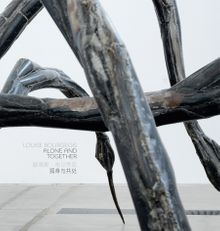 Louise Bourgeois: Alone and Together
Louise Bourgeois: Alone and Together
Published by Faurschou Foundation.
Edited by Janna Lund, Wendy Williams, Maggie Wright. Foreword by Luise Faurschou, Jens Faurschou. Text by Zhu Qi, Maya Kóvskaya.
PUBLISHER
Faurschou Foundation
BOOK FORMAT
Hardcover, 9 x 9.5 in. / 151 pgs / 70 color.
PUBLISHING STATUS
Pub Date 2/28/2014
Out of stock indefinitely
DISTRIBUTION
D.A.P. Exclusive
Catalog: SPRING 2014 p. 128
PRODUCT DETAILS
ISBN 9788791706011 TRADE
List Price: $40.00 CAD $54.00
AVAILABILITY
Not available
STATUS: Out of stock indefinitely. |
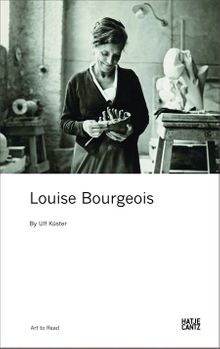 Louise Bourgeois: Art to Read Series
Louise Bourgeois: Art to Read Series
Published by Hatje Cantz.
Text by By Ulf Küster.
PUBLISHER
Hatje Cantz
BOOK FORMAT
Paperback, 4.75 x 7.5 in. / 144 pgs / 33 color / 6 bw.
PUBLISHING STATUS
Pub Date 3/31/2012
Out of stock indefinitely
DISTRIBUTION
D.A.P. Exclusive
Catalog: SPRING 2012 p. 101
PRODUCT DETAILS
ISBN 9783775732277 TRADE
List Price: $25.00 CAD $34.50
AVAILABILITY
Not available
STATUS: Out of stock indefinitely. |
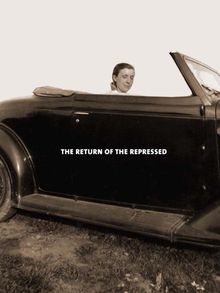 Louise Bourgeois: The Return of the Repressed
Louise Bourgeois: The Return of the Repressed
Psychoanalytic Writings
Published by Violette Editions.
Edited by Philip Larratt-Smith. Text by Louise Bourgeois, Elisabeth Bronfen, Donald Kuspit, Juliet Mitchell, Mignon Nixon, Paul Verhaeghe with Julie de Ganck, Meg Harris Williams.
PUBLISHER
BOOK FORMAT
Slip, Hardcover, 2 vols., 7.5 x 10 in. / 500 pgs / 113 color.
PUBLISHING STATUS
Pub Date 5/31/2012
Active
DISTRIBUTION
D.A.P. Exclusive
Catalog: SPRING 2012 p. 14
PRODUCT DETAILS
ISBN 9781900828376 TRADE
List Price: $45.00 CAD $60.00
AVAILABILITY
In stock
in stock $45.00 Free Shipping UPS GROUND IN THE CONTINENTAL U.S. |
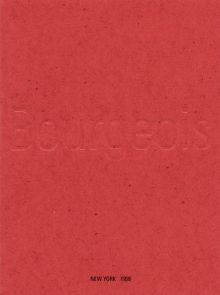 Louise Bourgeois
Louise Bourgeois
Artist's Portfolio
Published by La Fábrica.
PUBLISHER
La Fábrica
BOOK FORMAT
Paperback, 8.25 x 11 in. / 30 pgs / illustrated throughout.
PUBLISHING STATUS
Pub Date 3/31/2012
Out of print
DISTRIBUTION
D.A.P. Exclusive
Catalog: SPRING 2012 p. 101
PRODUCT DETAILS
ISBN 9788415303541 SDNR30
List Price: $55.00 CAD $72.50
AVAILABILITY
Not available
STATUS: Out of print | 00/00/00 For assistance locating a copy, please see our list of recommended out of print specialists |
 Louise Bourgeois: The Spider, the Mistress and the Tangerine
Louise Bourgeois: The Spider, the Mistress and the Tangerine
A Film by Marion Cajori & Amei Wallach
Published by Zeitgeist Films.
PUBLISHER
Zeitgeist Films
BOOK FORMAT
DVD (NTSC), 5 x 7 in.
PUBLISHING STATUS
Pub Date 7/31/2012
Out of stock indefinitely
DISTRIBUTION
D.A.P. Exclusive
Catalog: FALL 2012 p. 113
PRODUCT DETAILS
ISBN 9781935202417 TRADE
List Price: $29.99 CAD $40.00
AVAILABILITY
Not available
STATUS: Out of stock indefinitely. |
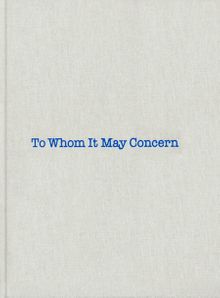 Louise Bourgeois & Gary Indiana: To Whom It May Concern
Louise Bourgeois & Gary Indiana: To Whom It May Concern
Published by Violette Editions.
PUBLISHER
BOOK FORMAT
Clth, 9 x 12.75 in. / 76 pgs / 24 color.
PUBLISHING STATUS
Pub Date 10/31/2011
Active
DISTRIBUTION
D.A.P. Exclusive
Catalog: SPRING 2012 p. 101
PRODUCT DETAILS
ISBN 9781900828369 TRADE
List Price: $75.00 CAD $99.00
AVAILABILITY
In stock
in stock $75.00 Free Shipping UPS GROUND IN THE CONTINENTAL U.S. |
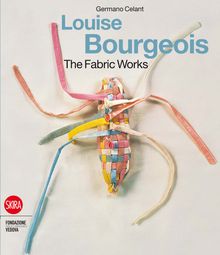 Louise Bourgeois: The Fabric Works
Louise Bourgeois: The Fabric Works
Published by Skira.
By Germano Celant.
A groundbreaking work, edited by Germano Celant in collaboration with the artist and her New York studio, which enriches our knowledge of Louise Bourgeois. Over a long career she worked through most of the twentieth century's avant-garde artistic movements from abstraction to realism, yet always remained uniquely individual, powerfully inventive, and often at the forefront of contemporary art. She was one of the world’s most respected sculptors, best known for her public-space pieces, grand-scale sculptures of spiders so large they must rest outside. But beginning in the 1960s, she used her own clothing and that of her loved ones as components of her sculptures and designs: a reincarnation of her childhood and her past. Her art would expand into new realms in 2002 when she began to weave together scraps of iridescent-colored fabric, creating works that vary from figures of flowers to chromatic abstractions, constituting a repertoire of truly surprising interweaves. This set of images is collected here in its entirety for the first time, constituting the closest thing yet to a general catalog.
Germano Celant, PhD in contemporary art and theory, is the author of more than 100 publications. He is also the curator of hundreds of exhibitions in the most prominent international museums and institutions.
PUBLISHER
Skira
BOOK FORMAT
Hardcover, 9.75 x 11.25 in. / 336 pgs / 474 color.
PUBLISHING STATUS
Pub Date 4/26/2011
Active
DISTRIBUTION
D.A.P. Exclusive
Catalog: Publisher Backlist
PRODUCT DETAILS
ISBN 9788857206547 TRADE
List Price: $90.00 CAD $115.00
AVAILABILITY
In stock
in stock $90.00 Free Shipping UPS GROUND IN THE CONTINENTAL U.S. |
 Louise Bourgeois
Louise Bourgeois
Published by JRP|Ringier.
Edited by Lionel Bovier, Hans Ulrich Obrist.
PUBLISHER
JRP|Ringier
BOOK FORMAT
Hardback, 9.5 x 11.75 in. / 96 pgs / 50 color.
PUBLISHING STATUS
Pub Date 3/1/2008
Out of print
DISTRIBUTION
D.A.P. Exclusive
Catalog: SPRING 2008 p. 136
PRODUCT DETAILS
ISBN 9783905770001 SDNR30
List Price: $79.00 CAD $95.00
AVAILABILITY
Not available
STATUS: Out of print | 11/25/2008 For assistance locating a copy, please see our list of recommended out of print specialists |
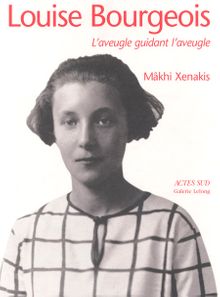 Louise Bourgeois: The Blind Leading the Blind
Louise Bourgeois: The Blind Leading the Blind
Published by Actes Sud.
Edited and text by Mâkhi Xenakis.
PUBLISHER
Actes Sud
BOOK FORMAT
Hardcover, 8.75 x 11 in. / 112 pgs / 100 color.
PUBLISHING STATUS
Pub Date 10/1/2008
Out of print
DISTRIBUTION
D.A.P. Exclusive
Catalog: SPRING 2009 p. 185
PRODUCT DETAILS
ISBN 9782742779192 TRADE
List Price: $49.95 CAD $60.00
AVAILABILITY
Not available
STATUS: Out of print | 00/00/00 For assistance locating a copy, please see our list of recommended out of print specialists |
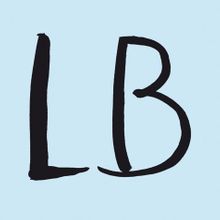 Louise Bourgeois: Aller-Retour
Louise Bourgeois: Aller-Retour
Published by Verlag für moderne Kunst.
Essays by Gerald Matt, Phillip Larrat-Smith and Peter Weiermeier.
PUBLISHER
Verlag für moderne Kunst
BOOK FORMAT
Hardcover, 9.5 x 8.75 in. / 216 pgs / 164 color.
PUBLISHING STATUS
Pub Date 8/15/2006
Out of print
DISTRIBUTION
D.A.P. Exclusive
Catalog: FALL 2006 p. 107
PRODUCT DETAILS
ISBN 9783938821190 TRADE
List Price: $50.00 CAD $60.00
AVAILABILITY
Not available
STATUS: Out of print | 00/00/00 For assistance locating a copy, please see our list of recommended out of print specialists |
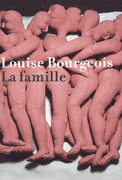 Louise Bourgeois: La Famille
Louise Bourgeois: La Famille
Published by D.A.P./Distributed Art Publishers.
Essay by Thomas Kellein. Text by Louise Bourgeois.
PUBLISHER
D.A.P./Distributed Art Publishers
BOOK FORMAT
Hardcover, 7 x 9.5 in. / 242 pgs / 150 color / 20 bw.
PUBLISHING STATUS
Pub Date 8/15/2006
Out of print
DISTRIBUTION
D.A.P. Exclusive
Catalog: FALL 2006
PRODUCT DETAILS
ISBN 9781933045429 TRADE
List Price: $45.00 CAD $55.00
AVAILABILITY
Not available
STATUS: Out of print | 00/00/00 For assistance locating a copy, please see our list of recommended out of print specialists |
 Louise Bourgeois: Emotions Abstracted
Louise Bourgeois: Emotions Abstracted
Published by Hatje Cantz.
Edited by Eva Keller. Essays by Robert Storr and Jean de la Fontaine.
PUBLISHER
Hatje Cantz
BOOK FORMAT
Clothbound, 9.5 x 11.75 in. / 144 pgs / 65 color.
PUBLISHING STATUS
Pub Date 8/2/2004
Out of print
DISTRIBUTION
D.A.P. Exclusive
Catalog: FALL 2004
PRODUCT DETAILS
ISBN 9783775714617 TRADE
List Price: $50.00 CAD $60.00
AVAILABILITY
Not available
STATUS: Out of print | 11/25/2008 For assistance locating a copy, please see our list of recommended out of print specialists |
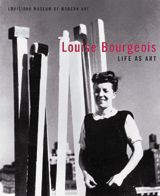 Louise Bourgeois: Life As Art
Louise Bourgeois: Life As Art
Published by Louisiana Museum of Modern Art.
Edited by Anders Kold and Michael Juul Holm. Essays by Poul Erik Tojner and Penelope Vinding. Introduction by Julie Sylvester.
PUBLISHER
Louisiana Museum of Modern Art
BOOK FORMAT
Paperback, 8.25 x 10.25 in. / 80 pgs / 49 color 33 BW / 1 duotone
PUBLISHING STATUS
Pub Date 7/2/2003
Out of print
DISTRIBUTION
D.A.P. Exclusive
Catalog: FALL 2003
PRODUCT DETAILS
ISBN 9788790029807 TRADE
List Price: $22.00 CAD $25.00
AVAILABILITY
Not available
STATUS: Out of print | 6/1/2005 For assistance locating a copy, please see our list of recommended out of print specialists |
PUBLISHER
Fondazione Prada
BOOK FORMAT
Paperback, 9.5 x 12 in. / 320 pgs / 200 duotone.
PUBLISHING STATUS
Pub Date 3/2/1998
Out of print
DISTRIBUTION
D.A.P. Exclusive
Catalog: SPRING 1998
PRODUCT DETAILS
ISBN 9788887029048 SDNR30
List Price: $55.00 CAD $72.50
AVAILABILITY
Not available
STATUS: Out of print | 00/00/00 For assistance locating a copy, please see our list of recommended out of print specialists |

